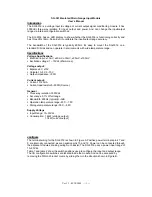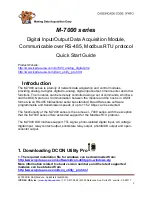
7
OuTPuTS, diSPlay aNd CONNECTiON PurPOSE
Edition of 0
9
.12.2020
05
The following additional parameters shall be set to the PLCM controller for controlling the
plasma cutter height:
• the desired arc voltage (to be selected based on the plasma installation manual). This value
can be zero. In this case, upon expiry of «control delay» time after torch firing, arc voltage will
be measured and assumed as the desired value. This value will be maintained during cutting.
• if the «ARC OK» signal is used, then after the plasma cutter activation command the PLCM
will not move the torch until a confirmation of «ARC OK» actuation is received from the THC1.
This function can be disabled, then movement will begin irrespective of «ARC OK» signal
status. In case of arc extincts during movement and ARC OK signal disappears, movement
will continue irrespective of the selected mode. The arc extinction is a standard situation. It
may occur, for example, if the cutout blank has already dropped out, but the cutting contour
was set with some overlapping, and the machine needs to cover some more distance before
it extinguishes plasma.
• «control delay» sets the time in seconds for which control will be suspended after the torch
activation. During metal piercing arc voltage is almost always much above the standard value,
and if control is not blocked this time, the torch will begin moving down trying to normalize
voltage. The delay depends on metal thickness and can amount 0 to 5–10 seconds.
• “overvoltage» (previously referred to as «permissible voltage tolerance») sets the
overvoltage limit at which control is allowed. If the current voltage exceeds the set voltage by
a greater value, then control is suspended until voltage returns to specified range. This is due
to the fact that the arc voltage depends on cutting rate also. See the plasma installation manual
for recommended voltage values for a particular torch speed. The CNC system decelerates
the torch in curves, which results in the arc voltage growth and, consequently, in the torch
lowering.
Besides, when the torch passes over the already cut section, the arc voltage rises abruptly
to idling voltage. This parameter has been introduced so that the system would not react to
such violent voltage fluctuations. Its value is selected experimentally and is usually 5–10% of
the desired voltage.
220 VAC – connection to ~220 V AC mains;
HV – high voltage input (30...200 V);
LV – low voltage input (0...8 V);
ARC OK – input of ARC OK signal;
ETHERNET – connection to a router or PC network card;
DATA CABLE – connection to THC1-M module;
POWER – (green) indicator of applied supply voltage;
THC1-dV1 module:
06
Outputs, display and connection
purpose
6
6
































